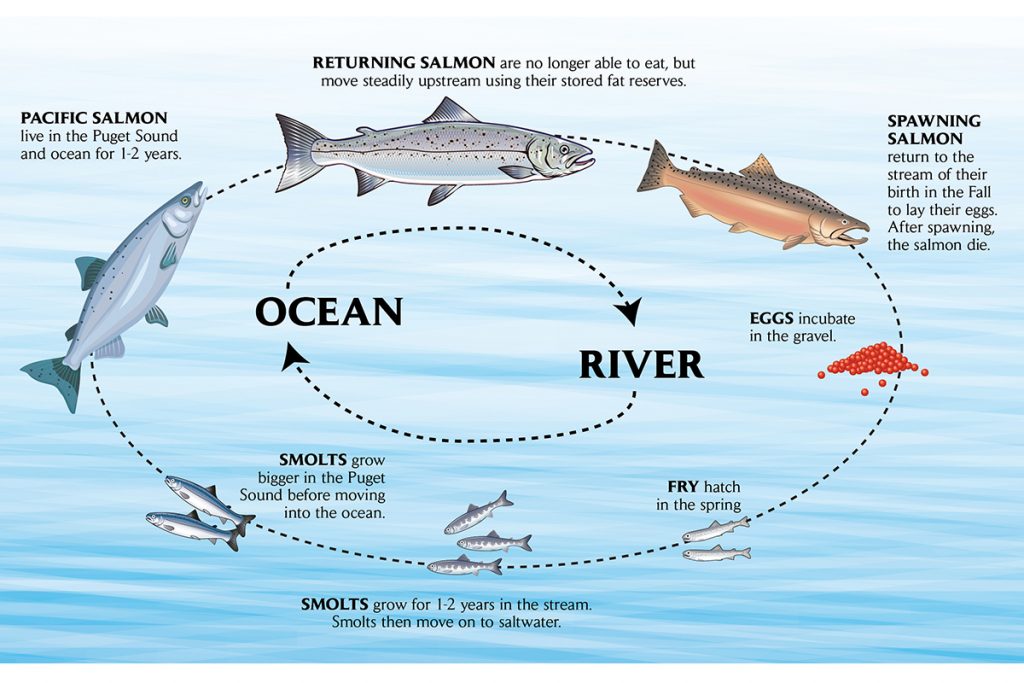WASHINGTON FOREST PROTECTION ASSOCIATION
Fish Habitat
SALMON LIFE CYCLE

Pacific salmon are a significant cultural symbol in Washington and the Pacific Northwest.

Their life cycles share a common pattern: young salmon begin in streams and rivers, eventually migrating to the sea. When they reach adulthood, they return to their birthplace in freshwater to spawn and subsequently perish. Even in death, they continue to play a vital role in forest ecosystems by providing nutrients for animals, insects, and plants. One crucial aspect of salmon recovery efforts involves removing obstacles and designing culverts to facilitate their migration. By 20221, Washington had removed 9,200 fish-blocking barriers, thereby restoring nearly 6,500 miles of historic fish habitat and eliminating all of the barriers completing the 20-year road and culvert improvements.
Private Foresters Doing Their Part to Recover Salmon Population
Private foresters are contributing to the recovery of the salmon population, even though forestry is not a major factor in the decline of wild salmon. They achieve this by enhancing habitat quality, and food availability, and ensuring clean, cold water – all essential for salmon thriving. Private foresters have actively participated in the development of the Forests & Fish Law, which forms the foundation of the Washington Forest Practices Habitat Conservation Plan. These policies compel foresters to adhere to rigorous guidelines to protect the water quality in the state’s streams and rivers. Additionally, new forest practices, such as those related to forest roads, culverts, buffer zones, and unstable slopes, have been implemented as part of the broader strategy to recover salmon populations.